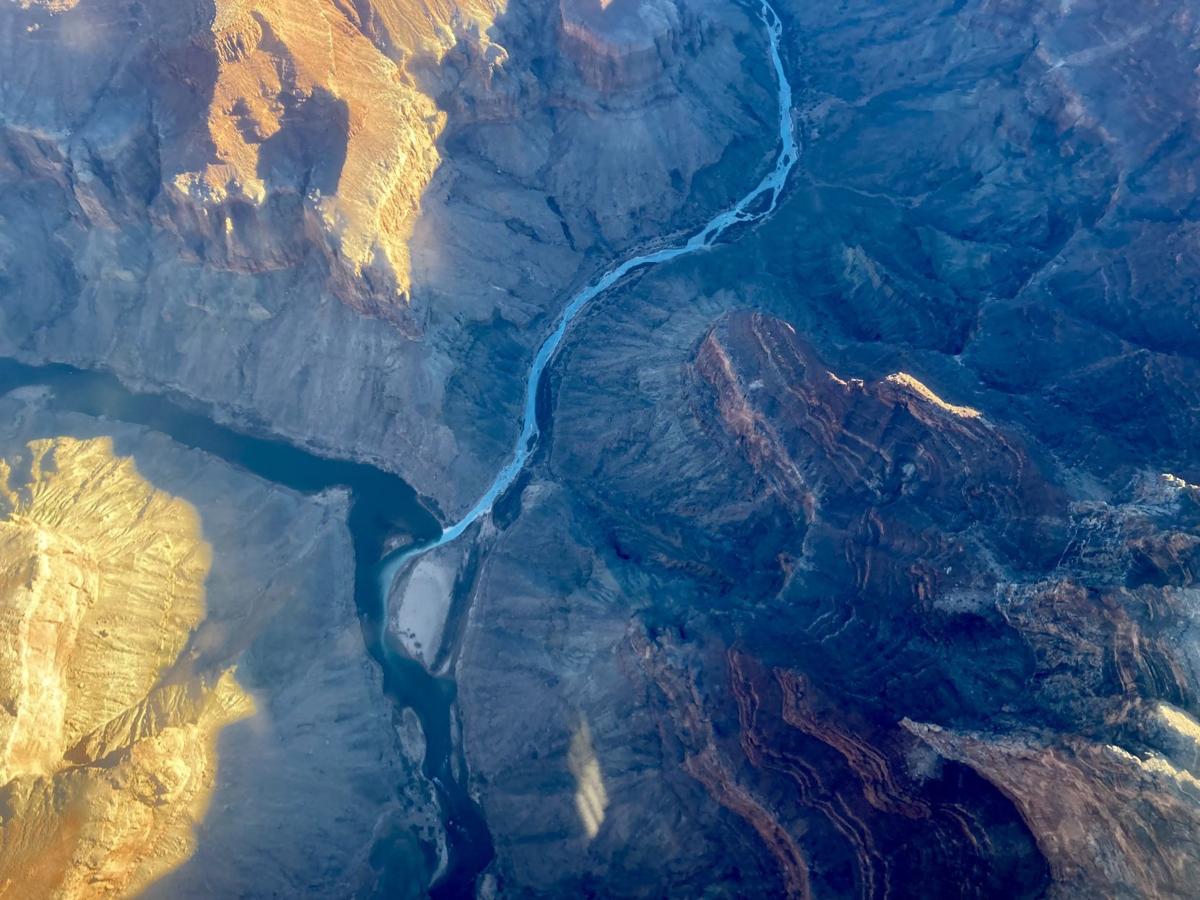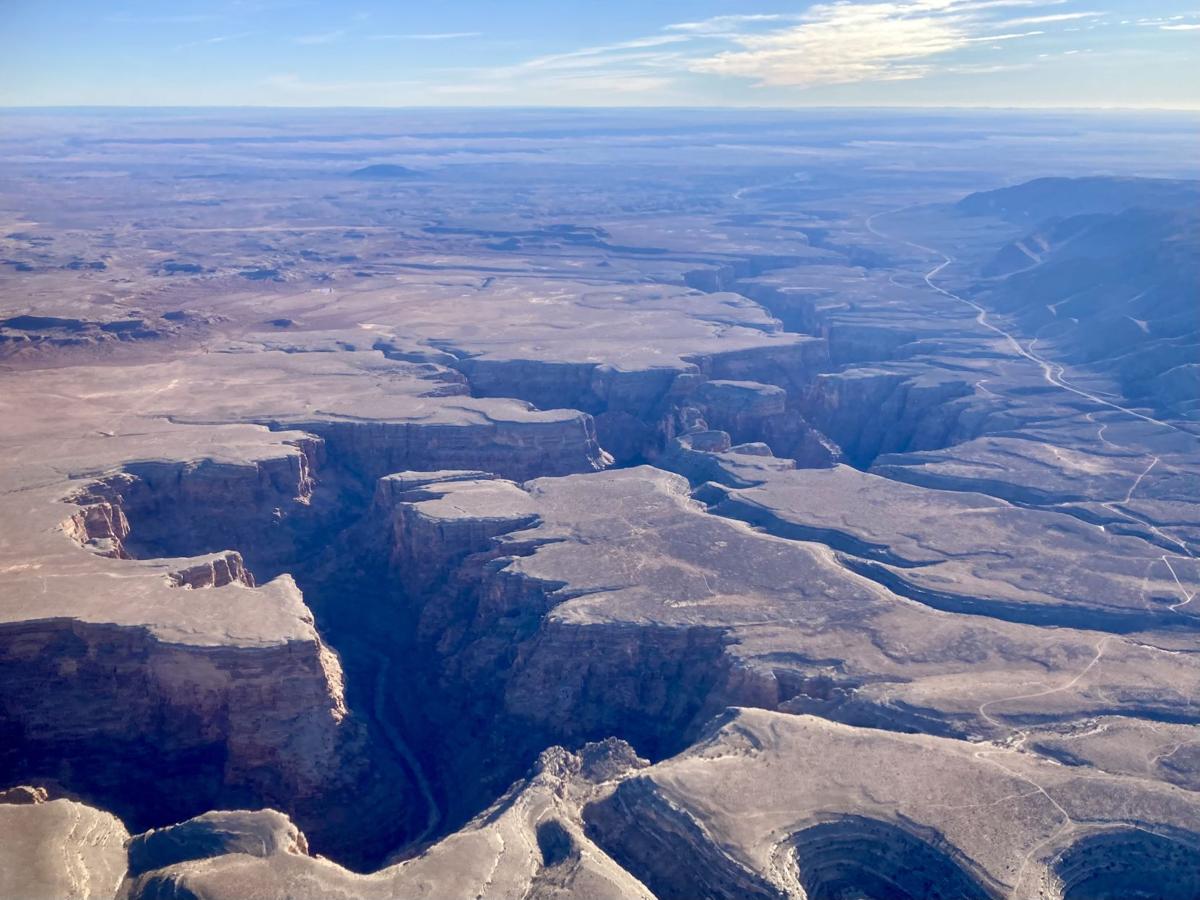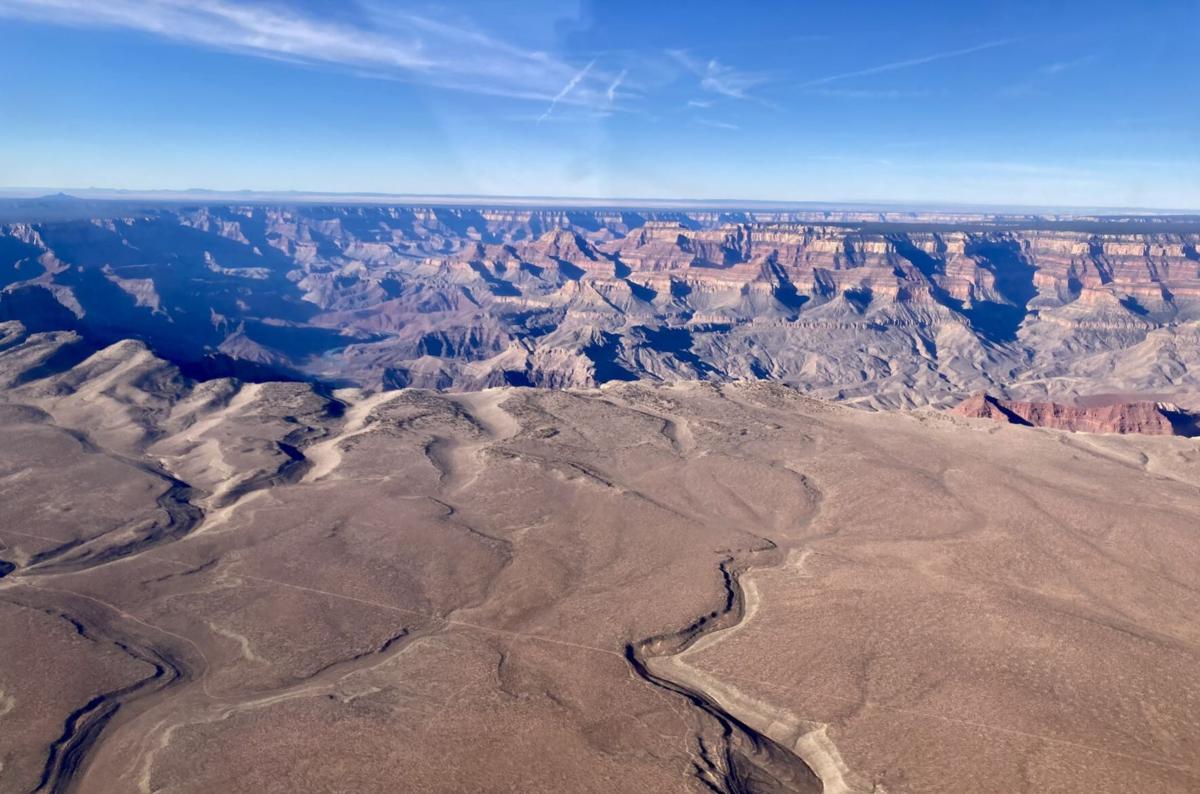The Grand Canyon Trust organized a flight over the Grand Canyon through non-profit EcoFlight. The flight took several members of the media, an author and a local film-maker near the Grand Canyon and over both the Little Colorado River and Pinyon Plain Uranium Mine on December 1.

The aqua blue waters of the Little Colorado River flow into the larger and darker Colorado River at the confluence. In addition to its cultural and spiritual importance to several local indigenous tries, the confluence has been a hotbed for university and USGS researchers as they study native fish and insects. Perhaps most well-known of those species, the humpback chub was downgraded from its status as endangered to threatened just last month after a long effort to restore the population of the native fish.

A view of the Little Colorado River as it winds its way from the southeast toward its confluence with the Grand Canyon and the Colorado River. A Pheonix-based developer, Pumped Hydro Storage, has proposed a hydroelectric dam project within Big Canyon that connects with the Little Colorado just a few miles form the confluence with the Colorado. The project is opposed by several local Indigenous tribes including the Navajo Nation, Hopi and Hualapai, and environmental groups such as the Grand Canyon Trust.

A view of the South Rim (left and bottom) and the North Rim (top right) of the Grand Canyon.
Activists hope passage of the Grand Canyon Protection Act this year will largely protect much of the area from future uranium mining. That bill, which has been passed twice by the House of Representatives but has yet to pass the Senate, would make permanent an Obama administration-era ban on future mining claims on millions of acres of federal land north and south of Grand Canyon National Park.
Existing mining claims held by companies would not be impacted, allowing some ongoing mining operations to continue.